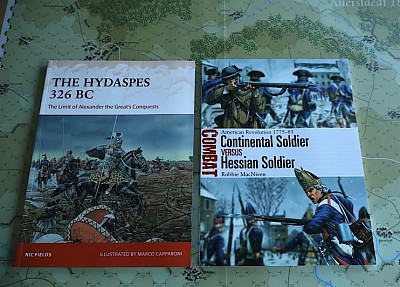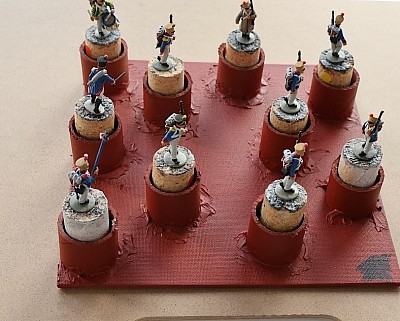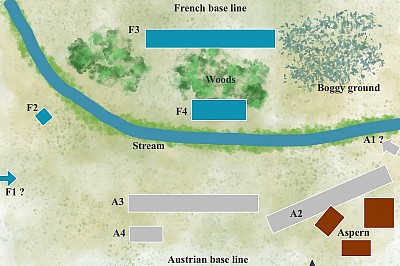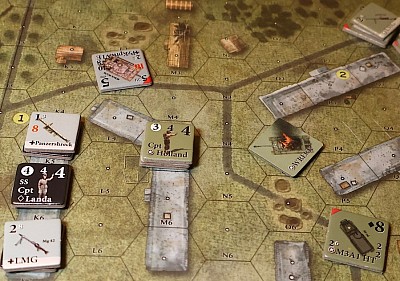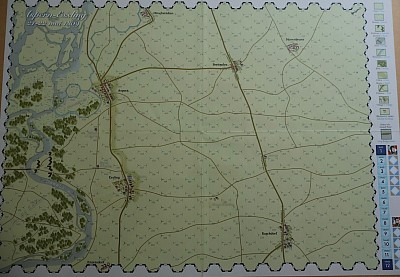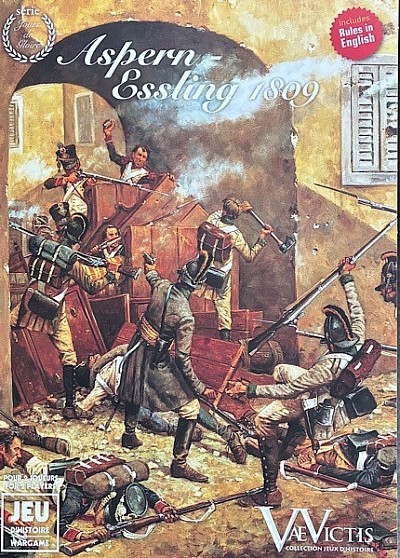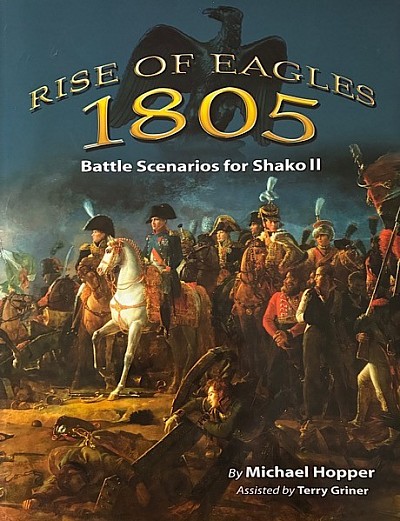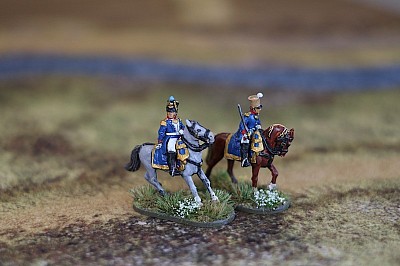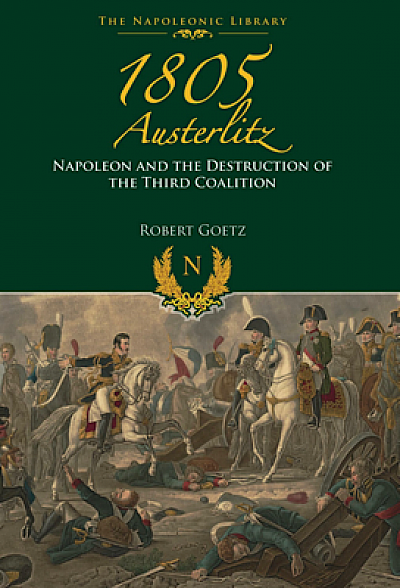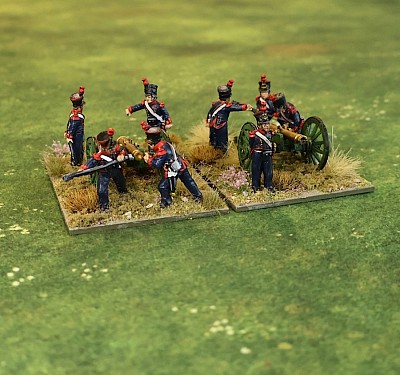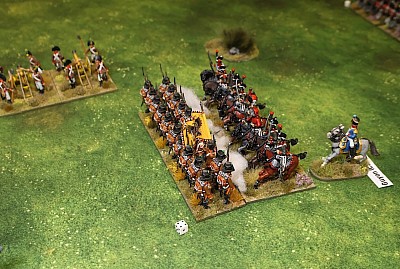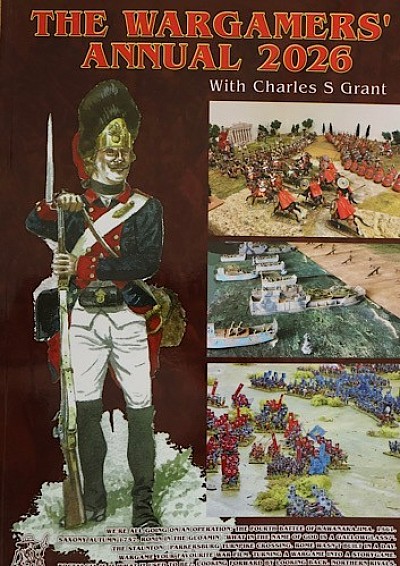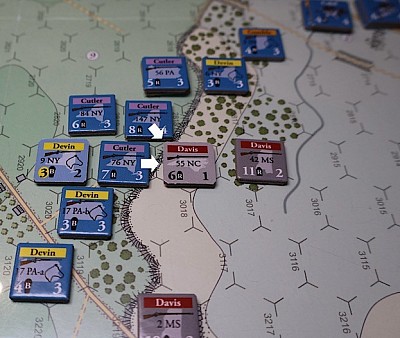Dear Diary - a rolling 4 months of comment
A couple of new Ospreys
I was in the Big City yesterday and picked up these two in Waterstones (a UK bookstore). Hydaspes has been out for a while, but the ink on the Hessian book is still wet!
I bought both as a bit of support material for two boardgame systems that I want get to the table in 2026.
I have a Hydaspes scenario in the Alexander module of Great Battles of the Ancient World by GMT and the Hessian book will just be a delight to read alongside any of the games from the Battles of the American Revolution, also published by GMT.
If anyone is stuck for a Chrismas present, the Hessian book looks an easy read while being very informative, plus it is a new release, which is always nice.
I have just realised, the map in the background is on a totally unrelated subject (Napoleonic) ..... it is not a coded message :-)
The Analogue Hobby Painting Challenge
The Analogue Hobby Painting Challenge is about to start again (21st December) and run for three months and they are asking for ‘sign ups’ now.
The idea is that you get a number of points for something that you paint i.e. 5 points per 28mm foot figure. You set yourself a goal in terms of points and then while the challenge is running, you upload your image of any completed unit / base / figure to their blog and they calculate the points earned and add them to your ongoing roster. By the end of it all you hope to at least have met your goal.
This has nothing to do with painting quality or judging etc, it is purely to encourage painting motivation over the winter months - so Hoorah! to the administrators for kindly giving their time to this.
At the end of the challenge, you should be well chuffed with your painting progress and the suggestion is that you make a donation to charity of your choice.
This is the 16th year of the Challenge and my first time of participating. I am an unlikely participant because it was only in the summer that I hit the wall of painters fatigue and resolved to move to 28mm and just paint at a much more pedestrian rate.
There is of course a fine line between ‘pedestrian’ and ‘dead in the water’ and I have not been picking the paintbrush up nearly enough.
So, I am joining the Challenge to get a bit of painting discipline back.
I would be happy to paint 1 x 20 man unit per month, so over 3 months that would be 3 units with 60 men. The Challenge is meant to be motivational and so they suggest stretching yourself a bit, so I will go to 4 units.
That will be a total of 80 figures at 5 points each, gives me a 400 point goal. My Charity of choice to donate to will be MacMillan (a Charity for supporting anyone with cancer ).
You can prep your figures now, but can't start any painting until 21st December. If you haven't presented your first 'item' by 21st January, you are dropped off the roster .... well it is a challenge!
I reckon putting together a unit of 20 men properly based takes me around 13 hours, so four of them will take around 56 hours - so something like 6½ working days!
The above photo shows my new method of painting organisation. I paint in groups of no more than 10 figures at a time now. I made a little gizmo from an 8” x 8” piece of cardboard (I used an artists canvas panel). Then cut down a thick cardboard tube into 1” sections and glued them to the board using blobs of ‘No More Nails’ … hence it looks a bit like spot welding! Each tube takes a standard cork, which makes handling each figure easy. The whole thing was sprayed with a rattle can primer that I don’t like and wanted to get it used up.
The grouping in the photo are half a unit of French Napoleonic Line Infantry. They are still at the ‘ugly’ stage, but I am only a couple of painting sessions away from giving them their dirty wash. Thankfully, they are the second half of the unit, so soon another full unit will be marching to barracks.
For those interested in having a go, here is a link to the ‘Analogue Hobby Painting Challenge’
Transfer from board game to tabletop.
After playing the 1809 Aspern Essling boardgame the other day, some work has been done to convert a slice of action from that game to take to the figures table.
I have put a post up on the Battlefields & Warrior Blog (link below) that describes the process of conversion, so that those elements peculiar to the boardgame are carried across to the figures table.
This topic will be covered in three posts. The first showed the boardgame, the second shows the conversion process from boardgame to table and the third will cover the resulting scenario played out with figures.
LINK;
https://battlefieldswarriors.blogspot.com/2025/11/taking-boardgame-action-to-figures.html
The Ruhr Pocket
For tonights face to face game I thought it time to play an ‘Old School Tactical’ game from their Phantom Division module, which covers actions of US 9th Armored Division with 6 scenarios ranging from December ‘44 to April ‘45.
I picked ‘The Ruhr Pocket’ April 1945, which is a real mismatch between well supplied US forces and a hodgepodge of German units (SS, Wehrmacht and Volksturm remnants) that at this stage of the war were teetering on defeat …. but in places are resisting vigorously.
There are a couple of unusual aspects to this OST scenario. The Germans have differing ‘Gut Check’ (read morale tests!) values, depending on whether they are SS, Wehrmacht or Volkstrum. For every 5 casualty points that the Germans suffer, each of those values degrade by 1. Further, units can only rally if present with a leader. So this is a very brittle German force.
Secondly, on the first turn, impulses etc are not used. Instead the Americans waltz onto the board taking what is in effect a movement turn in which everything can move normally and without risk. Then the Germans are placed semi randomly on the board. The German force at set up is stacked into 6 off-board groups and there are 6 significant building locations over the whole board for them to occupy. The German player selects the first location (C10) and then rolls a D6 to randomly select which group go into that hex/building. Then the next significant building (F5) follows the same process etc.
It is a very dynamic way to set up and will no doubt bring some surprises for the US player if they have moved deeply. One of the German groups is a lone Tiger I tank …. where will that end up this time!
Finally, for those that know the system, the Germans get just 1D6+2 impulses per turn, which is pretty dire. The US get 2D6+3 and the consequence of that is that the US are going to be all over the German force.
That said, in the photo, a US Pershing tank has just poked its nose around the corner of a building and the Tiger has used the last German Impulse to get a shot off …… Thud! ... Explode! There is still a contest going on here, it is not all one way traffic!
With so many variables right from the get go, I can see some playings of this scenario being very successful from a two player perspective and some not.
It is a 7 turn game, but the US can win at the end of any turn in which all German units have some sort of damaged status, even if they are just shaken. Or if the US control 5 of the 7 target buildings.
Playing Aspern Essling
As Napoleon tries to get his forces across the Danube, can his lead formations at Aspern and Essling villages, fend of the approaching Austrian columns?
This is a short 5 turn scenario that I have played to conclusion and posted some replay notes over on the Battlefields & Warriors Blog. The link is provided below for anyone interested.
LINK;
https://battlefieldswarriors.blogspot.com/2025/11/playing-aspern-essling-1809-day.html
Aspern-Essling 1809
Well, November seems to be turning into a 'Napoleonic Month'. The 2nd Edition Aspern-Essling boardgame, from the Jours de Gloire (Days of Glory) series, published by Vae Victis, has just gone onto the table.
The first day (21st) scenario is only 5 turns long, so that is getting attention first, while the rules ‘slowly’ return to me ….. I nodded off twice last night while reading them - Oh Dear!
The scenario starts at 1 PM and each turn lasts for 90 minutes, playing through until 7 PM.
The last time I played this, I remember being unsure how to get the best out the French cavalry, who initially occupy the space between the two villages and in the end they just got drawn in bit by bit, getting chewed up, whilst providing a series of emergency interventions to protect the line.
There are a couple of interesting aspects to this game. (1) This is a chit draw game in which formations activate as their command chit is drawn from a cup. The French have the option to amalgamate some command into the hands of Lannes and Messina, so that whenever either of those two commanders activate, they can operate those amalgamated commands at that time, making the co-ordination of different divisions to the local situation much more effective.
(2) To get to the Aspern-Essling Villages, Napoleon’s force had to cross the fast flowing (due to snow melt) Danube, using two bridges, first a long bridge (over 700 metres) to reach Lobau Island and then a short bridge (100 metres) to run from Lobau Island to the far side of the Danube. So this became a choke point for the French advance, while upstream, the Austrians were throwing tree trunks into the water and launching burning boats, in an effort to damage and knock out the bridges, leaving the French in a precarious situation, with their forces on both sides of the Danube while the bridges were under a constant state of repair and attack.
Will the French units that are already across the Danube, positioned in the two villages, be able to fend off the approaching Austrian Columns?
Scenario book for 1805
Thanks Jon for pointing me in the direction of this scenario book. Published in 2008, I wasn't sure that I would still be able to source a new copy, but Caliver Book (UK) had it in and it has just arrived - a lovely thing.
Of course the first thing I dived into was the Mariazell scenario, but was disappinted to hear that the author had used the wrong bit of geography for this particular scenario, but having the rest of the scenario, including the order-of-battle is most welcome.
For those interested, a list of 18 scenarios are described in a format favourable to the Shako II rules, but they look easily convertable to other rule sets that I have. The following actions are covered;
Wertingen
Gunzburg
Haslach-Jungingen
Elchingen
Albeck
Caldiero (South Flank)
Caldiero (North Flank)
Caldiero (3rd Day)
Amstetten
Mariazell
Durrenstein
Raussnitz
Austerlitz (South Flank)
Austerlitz (Pratzen heights)
Austerlitz (North Flank)
Austerlitz (Grand Battle)
Stecken
Overall, a lovely presentation that I will keep dipping into.
Two Napoleonic French Colonels
An initial trial with the Soldiers of Napoleon rules highlighted a couple of gaps in the collection that need early attention - the lack of Skirmishers and local commanders.
So the painting queue was interrupted with two French Mounted Infantry Colonels, from Perry Miniatures (French metal Pack FN4) taking centre stage. The third officer from the Pack will just have to be patient :-)
These were primed black, heavily dry-brushed (twice) and then contrast paint was used as a ground for the big areas of horse and blue uniform. This is a very fast way of getting paint down and for it to go into all the nooks and crannies, but I have never liked the look of Contrast paint alone, so then standard acrylics were used to block paint everything, including the horses and blue uniform.
Once done, a thin wash was liberally applied and then some very minor highlights put back in.
For varnish, they got a brushed coat of gloss, because they are metal, followed by a brushed coat of matt. I once read that gloss varnish is tougher than matt and so makes a good first coat on metal. I have no idea whether that is true, but I have no mind of my own, so slavishly follow the advice.
Finally they are mounted on 50mm ‘pill’ bases from Warbases using No More Nails to fix them. This ‘paste-like’ adhesive seems to help ‘settle’ cavalry down, as their own metal bases can be uneven underneath.
Anyway, it makes a start on the needed local commanders. The French will undoubtedly do better under their command. Two Austrian commanders are up next to keep things even.
A bargain Napoleonic read
I have just downloaded this for the Kindle from Amazon (UK) for 99p. The price of the physical book is £18.
At first glance, it looks like a nice, very readable, all-encompassing examination of the 1805 campaigns and battles, leading to Austerlitz itself.
The book begins with the forming of the Third Coalition and goes on to discuss the manoeuvres leading to the Battle of Ulm, followed by the subsequent actions that then led to Austerlitz.
There is a good battle account of Austerlitz and its aftermath. At the end of the book is a very useful order of battle, that includes formation strengths for both sides at the Austerlitz battlefield.
At the Kindle price of 99p, it would have been rude not to get it! :-)
Eagles at Quatre Bras
After playing the Mariazell 1805 scenario over the weekend with the Soldiers of Napoleon rules, I enjoyed the game, even though the home brew scenario needs some better balance, but I was left feeling that the system might be a little process heavy for my tastes. I was finding that the good granularity that is definitely there was causing me to repeatedly dive into the rulebook just to make sure that ‘I had that right’. Also some of what was going on felt a bit contrived at times.
Having only played twice, I am perhaps being a bit unfair to the rules as getting to know the system better would undoubtedly help. Another possible thing is that playing the system solo means managing two hands of cards, which though do-able, perhaps gets in my way. I am not a ‘cards’ fan, so that is not a good place for this mindset to start from.
Anyway, just as a thing, I decided to convert the scenario to specifically work with my home brew rules - Eagles at Quatre Bras and I was immediately surprised how much of the scenario detail could just be jettisoned, especially the scenario ‘Special Rules’, which pretty much went in their entirety.
This reinforced my sentiment that the scenario under SoN was tending towards the presence of process, though it also leaves me wondering whether my EaQB take on the scenario will be less flavoursome.
[Photo - French artillery, a recent purchase from E-Bay that I have re-based to match my own stuff].
I would be the first to say that there really is nothing special about my own rules and doubtless many would not like them, facing that same problem of needing to play several games for them to become second nature and perhaps that just highlights a common wargaming problem of continually jumping between sets and never really properly getting to grips with just one.
In SoN, the cards add an extra bit of administration to play. Also there is a stepped process to showing the effect of casualties, with disruption levels increasing due to the rigours of contact and over time to keep those units in play, there is a need to swap those disruption markers out for base losses and I am left wondering whether this is any better than just going straight to casualties or accumulative cohesion deterioration.
The cards do bring a bit of narrative to play, but then my simple Event Table does similar. SoN is very clever and full of goodness. The question for me at the moment is whether with my ongoing bad back, so much goodness is extending the time that a game is taking to play and in consequence extending the time that I am on my feet (I stand to play to reduce stretching across the table). I spread the time at the table for the Mariazell scenario, with just one turn sessions, over two days to reduce back strain and so I am mindful that my choice of rules is depending more on my own physical limitations at the moment rather than there being any real issue with the rules i.e. someone else will thoroughly enjoy the immersion and have it played through in a single session.
To ensure that there isn’t just an arrogant aspect off falling back to the familiarity of my own rules, I am also converting the scenario to be Black Powder compatible and might even extend this to doing a conversion for Keith Flint’s Shadow of the Eagles rules ….. I love the cover to those rules and the slim hard cover volume gives a sense of a Christmas Annual, a nostalgia thing ….. yes I am that shallow :-). It will be interesting to compare the plays on this limited scenario, who knows, I may be surprised!
I will certainly replay the newly tweaked scenario again with SoN as part of this comparison and will probably do that first while the rules are still fresh to memory!
Anyway, as part of all this, I have just sent off the files (again!) for EaQB to a print on demand company to get the latest version done in a proper rulebook format with colour photographs in there ….. no doubt after the first playing, the new booklet will start to fill with hand written notes, just like the previous drafts have. I have done this about 7 times now, so they are the most expensive rules I have ever owned :-).
One of the good things to come out of this is that I am starting to feel an intimate connection with the Mariazell scenario as so much time has been spent on researching and tweaking it.
Anyway, there we are. Ultimately I would like to get to just one ‘go to’ set of rules and at the moment this could go in any direction, even to SoN, which I really want to like. With Christmas on the horizon, setting some kind of false line in the sand, it would be nice to give all four rule sets mentioned an outing before then.
In the meantime, I need to paint more Austrians, but a French infantry unit is blocking the painting sticks at the moment!
Mariazell, the Austrian right flank
I spent a pleasant Sunday, going into Monday, doing the first play test of my Mariazell scenario for the Sons of Napoleon rule set.
It was in fact draft 2, but now on reflection, I wish I had tested draft 1 first as I think that was closer to representing the fatigue of von Merveldt’s Austrian Division. On our table, the Austrians had two infantry regiments on the left, the Grenadiers in Mariazell in the centre and on the right were the Grenzers and a 6pdr gun battery.
While Mariazell itself is a fixed location on the table, a wood (ending up in area 3) and two large fields were randomly placed …… already an unravelling was in the making!
During the game, Mariazell was not attacked. The four French infantry regiments attacked the Austrian left and though inflicting harm, they were heavily bruised and repulsed in the fighting. So today we will be just looking at the Austrian right flank as this from a systems and outcomes point of view, I found the most interesting.
At start, the Grenzers are allowed to deploy one of their three infantry regiments in the woods … wherever that might be (random placement). They chose to do so, even though the woods were on the French side of the table - I thought it might slow the French down, especially as their force consisted of a lone Chasseur á Cheval (Light Cavalry) regiment and supporting 6 pdr Horse Artillery.
The French deployed on their table edge ….. within musket fire of the woods!
Of course the Grenzers in the wood duly fired upon the limbered horse artillery, compelling the guns to unlimber with the intention of raking the wood with close range cannon fire.
But the Grenzers fired again, before the now unlimbered artillery could respond, inflicting enough harm to disorder the artillery. Disordered units do not perform well in this system and if the disordered guns were to trade fire with the Grenzers, being only 2 bases strong, they would quickly come off very badly …. So, they spent some time trying to rally off the damage, which simply allowed more Grenzer fire. In the end, the artillery had had enough and routed off the field.
That was a lesson!
Number 2 lesson was that the now lone Chasseurs were very limited as to what they could do on this part of the battlefield. They can’t enter woods to go after the Grenzers there and if the other Grenzer infantry go into square, they would be proof against the horses. The only other choice would be to go for the Austrian guns ….. What a choice!
The Austrians saw the potential threat to the guns, so they turned the artillery towards the horse and moved one infantry regiment forward to cover the battery’s flank. The other Grenzer infantry unit did go into square.
The Chasseurs felt really hobbled, ideally they would / should just retire and leave the table …. Alive! But here, as with most systems, leaving the table counts as a unit loss.
The Austrian infantry moving forward had in effect closed the gap with the cavalry, who immediately took a charge test and passed. They charged straight in to the Grenzer infantry standing in line! It wasn’t pretty, the Grenzers suffered heavily and were forced back.
The Austrian guns were now exposed and a successful cavalry charge would see them off. As a result both sides spent their remaining playing cards trying to get an advantage between the artillery and the cavalry. The Chasseurs did manage to get a charge home on the guns, but the subsequent melee was a draw, causing the Chasseurs to fall back. Had they won, even by just 1 point, the guns would have been seen off - a missed opportunity, but one down to Lady Luck.
Of course all of this frenzied spending of cards for orders to sort that fight out meant that I had totally overlooked the need of the Grenzer infantry recently hit by the cavalry, to rally off their damage. Come the end of turn phase, those Grenzers were just carrying too much damage and they were routed from the field!
By this time, the Chasseurs were down to just two bases of horse. They were in a dire situation, even if they retreated, they would be hit by artillery …… better to go down in glory, one last charge on the guns!
They passed their charge test, but rolled poorly for the random element of the charge movement and their charge fell short of the guns, who wasted no time in firing canister at the horse, routing them from the table.
The loss of the horse and the Victory Points that it gave the Austrians assured that the French Break Point level had been reached. Nothing else on the table could save them, the game ended in an Austrian victory.
Really, if the scenario were working properly, the French left wing would have been a side show. The real tussle should have been with their infantry on their right, who should have been able to carry the day for the French side.
Oh well, back to the drawing board, but in my next game, I will be more thoughtful when dealing with infantry in woods and those two Austrian Infantry Regiments will need to be a little more brittle if the scenario is to feel right.
Wargamers' Annual
Dropping through the door today is this year’s ‘The Wargamers’ Annual 2026 with Charles S Grant’ and published by Caliver Books.
I find the whole idea of a wargamers annual published in time for Christmas to be simply a nice bit of hobbying treat, a tick to put in the ‘joy column’ of the year’s checks and balances of life.
For full disclosure - for a second year, Charles Grant kindly accepted a submission of mine for inclusion in the publication - thank you.
This year the annual extends to 115 pages with a range of topics that can quite properly be described as something for everyone.
Here is a quick run through the articles in order of presentation;
The Fourth Battle of Kawanakajima, 1561 by Dale Smith - Plenty of eye candy. 12 players have gathered to play a variation of Black Powder.
Wargame Your Favourite Film by Ken Hanning - scenario building from key movie moments - there are some nice shots of Ken's Arnhem, Omaha and Pegasus Bridge tables.
“What in the name God is a Gallowglass?” By Iain MacMillan - A telling of a devastating ambush.
The Staunton - Parkersburg Turnpike Crossing, from my pen - This is a small ACW action played with Epic scale figures on a 4x2 mat. The action was lifted from an incident played in a boardgame and transferred to the figures table, using home brew rules.
Rome wasn’t built in a day … Hannibal Project by Jim Purky - at the opposite end of the scale range, we have gorgeous 54mm figures. The project looks at Punic Wars army building in 54mm and getting suitable terrain.
We’re all going on an operation…. By Allan Tidmarsh - 3 scenarios with skirmish sized forces for early WWII with home brew rules (1) British commandos and French resistance raid on a coastal harbour (2) German paratroopers attack a British radar installation (3) French resistance and British commandos attack a railway installation.
Ronin in the Gloamin by Kevin Calder - A Lion Rampant variant on a 6x4, Samurai troops fighting against Conquistadores figures ….. due to Portuguese ships being damaged after a storm!
Saxony: Autumn 1757, the 2nd year of the Third Silesian War .. near Reichardtswerben by Bill Gilchrist - A fictional scenario with Black Powder rules.
Nostalgia - Is It What It Used To Be? Looking forward by looking back by Tim Hall - A wargamer since the 60’s thinks wargaming has never been better than it is now, even as he fondly looks back over his shoulder.
Northern Rivals by Angus Konstam - A fictitious 1643 English Civil War scenario with a nice map for a 6x4 table if using 28mm, roughly sized at 4 foot units, six horse units and 1 dragoon unit per side.
Turning A Wargame into a Storygame by Philip Dutré - we get a river crossing with Blue and Red forces and a nice 6x4 map and it could play as a standard wargame, but here, the players are not generals and they do not take sides, they are not out to win - the focus is on storybuilding. They are perhaps journalists, civilian by-standers, historians etc and their view of the game (story) is underpinned with 4 narrative driven charts, with playing cards (2 packs) activating a particular paragraph - example 6 of Clubs on the Battle Chart “One infantry that has activated during your Unit Action can fire twice. How did they achieve this burst of concentrated fire?” So you use your rules to allow the unit to fire twice, but you discuss and decide the narrative of why it was able to fire twice. A very fresh look at approaching a wargame.
All in all the publication seems to do what an annual should do, it has something for everyone and is a pleasant cover-to-cover read and a treat for a bit of ‘me time’.
The Joy of Scenario Research
I have just spent a hugely enjoyable time doing a bit of research on an obscure Battle for a Son's of Napoleon scenario.
Next will be to get it to the table for some testing, but I hope the contrast between a smaller, fitter force against a larger, but tired force with dented morale makes for interesting game.
There is a wider conversation about this over on the Battlefields & Warriors Blog page at the link below.
LINK
https://battlefieldswarriors.blogspot.com/2025/11/what-wonderful-hobby.html
3rd replay of Gettysburg game
I have just enjoyed an afternoon's play of the morning scenario from the First Day at Gettysburg package.
With the rules fresh in my mind, play was slicker and a few more of the nuances of the system became obvious.
In the photo, Cutler's Brigade has just arrived and straight off the march, two of his regiments charge up the steep slope to assault the reduced 55 NC's position - will this open the line to allow Cutler to destroy that Confederate flank?
The Blind Swords system uses chit draw to activate units and Special events, to reduce a player’s unrealistic control over the game. You either like that or you don’t.
The combat system uses a two-part Combat Table and is subtly very clever. The first part takes into account all the usual combat factors and delivers a result that is directly tied to the Cohesion (training, morale etc) of the target.
If effective, you go to the second part which uses two dice. The first determines the actual damage caused to the unit in terms of casualties. The second dice (the Skedaddle dice) determines the effect on unit morale, whether it retreats, becomes shaken or becomes disrupted.
Each part of that process is looking at a different aspect of how fire / combat works. It is very well thought out.
The games do want to show off their historical credentials, though that comes with a price that the additional exclusive rules that come with each game can add to the learning curve of each new module, despite them using a common series rule set ….. but that is rewarded in the play - you do get Gettysburg.
Historically, at this point in the battle Heth fought with just two of his brigades, despite having two more in reserve. This system promotes that by making the other two brigades harder to get into action.
Recently, using a different and simpler system, I played another Gettysburg title, the rules did not put any brake at all on Heth calling up his other two brigades and that gave a game opening that essentially was ...... Not Gettysburg. Added to that, the game needed errata to cause the initial Union reinforcements to arrive in the area of McPherson's Ridge that was nearer to the historical time table.
The extra detail here certainly makes the Blind Swords game a better simulation and a more satisfactory game.
